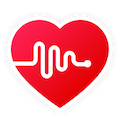How to Measure Blood Pressure?
Knowing and understanding your values is key to controlling high blood pressure. Regular home monitoring of blood pressure help you stay in-the-know about your heart health and may help prevent secondary diseases. In this article we will show you how to find a reliable blood pressure monitor and how to correctly read your blood pressure.
Blood pressure measurement
Blood pressure measurement on the upper arm
The operation of upper arm blood pressure monitors is simple. First, the cuff is applied to the upper arm. Second, the computer needs to be used according to the instructions. For many blood pressure monitors this simply means one click on the start button.
Blood pressure measurement on the wrist
Wrist blood pressure monitors are operated similarly. First, the cuff needs to be put on the wrist. The second step is to bring the measurement point on heart level by putting your elbow on the table. Third, the button to start the measurement needs to be pushed.
Prerequisites: Get a reliable blood pressure monitor
Before diving into the topic of blood pressure management, it is important to have the right tools. Thus, we recommend to get a reliable blood pressure monitor to regularly measure your blood pressure at home.
| Ranking | Name | Type | Price | Buy |
|---|---|---|---|---|
| 1 | Omron EVOLV | Upper Arm | ⁓£115 | View on Amazon |
| 2 | Omron M7 Intelli IT | Upper Arm | ⁓£60 | View on Amazon |
| 3 | Braun iCheck 7 | Wrist | ⁓£50 | View on Amazon |
Read more about our recommendations in our review of blood pressure monitors.
9 tips for correctly measuring blood pressure
- Physical and mental effort
- Substances affecting blood pressure
- Correct position
- Calmness
- Correct arm
- Cuff
- Measurement point
- Time of day
- Recording blood pressure readings
Tipp 1: Physical and mental effort
Before reading your blood pressure, you should make sure that you are not physically or mentally strained. Neither should you read your blood pressure when you are nervous or upset, nor should you have exercised beforehand. Both, physical as well as mental strain, can cause a distortion of your values.
Tipp 2: Substances affecting blood pressure
Do not take any antihypertensive medication or other substances influencing your blood pressure like coffee, green or black tea before the blood pressure reading. Otherwise you will not get meaningful results.
Tipp 3: Correct position
Make sure that you are reading your blood pressure in the correct position. Sit comfortably on a chair with your back supported and both feet flat on the floor.
Tipp 4: Calmness
Make sure to not measure your blood pressure immediately after sitting down. You should wait for five minutes to calm down and then start the reading.
Tipp 5: Correct arm
The blood pressure can be different depending if you are using the left or right arm for the reading. Therefore, you should read your blood pressure on the arm where you reading usually results in higher values.
Tipp 6: Cuff
It is important that the cuff fits your arm. The blood pressure cuff must not be too wide or too narrow and must be properly attached to your upper arm or wrist.
Tipp 7: Measurement point
After correctly putting on the cuff, you have to bring your arm in the correct position. Regardless of whether you have a wrist or an upper arm blood pressure monitor, the measurement point on the arm should be at heart level. For upper arm gauges, this means putting your forearm flat on the table. For wrist sphygmomanometers, it is best if put your elbow on the table.
Tipp 8: Time of day
The time of day also plays an important role for the blood pressure measurement, as the blood pressure varies during the day. Ideally, you should measure your blood pressure immediately in the morning after getting up and before drinking coffee or taking medication.
Tipp 9: Documenting blood pressure readings
Last but not least, you should read your blood pressure on a regular basis and document your values in order to detect changes.
A good way to track your blood pressure is by using the Cora Health blood pressure app. Lucid charts help you to recognise changes in your data over time. In addition, you can create a comprehensive report, which you can present your doctor.
Summary
Below you can find a summary of all our tips for your blood pressure measurement.
| Tipps | Guideline |
|---|---|
| Tipp 1 | Make sure that you are not physically or mentally strained. |
| Tipp 2 | Do not take any substances that affect the blood pressure before the reading. |
| Tipp 3 | Sit upright on a chair. |
| Tipp 4 | Wait for five minutes and then start the measurement. |
| Tipp 5 | Take the arm where you usually measure higher blood pressure levels. |
| Tipp 6 | Use a blood pressure cuff that fits you. |
| Tipp 7 | Bring the point of measurement to heart level. |
| Tipp 8 | Measure your blood pressure in the morning after getting up. |
| Tipp 9 | Keep track of your blood pressure readings and their development. |
